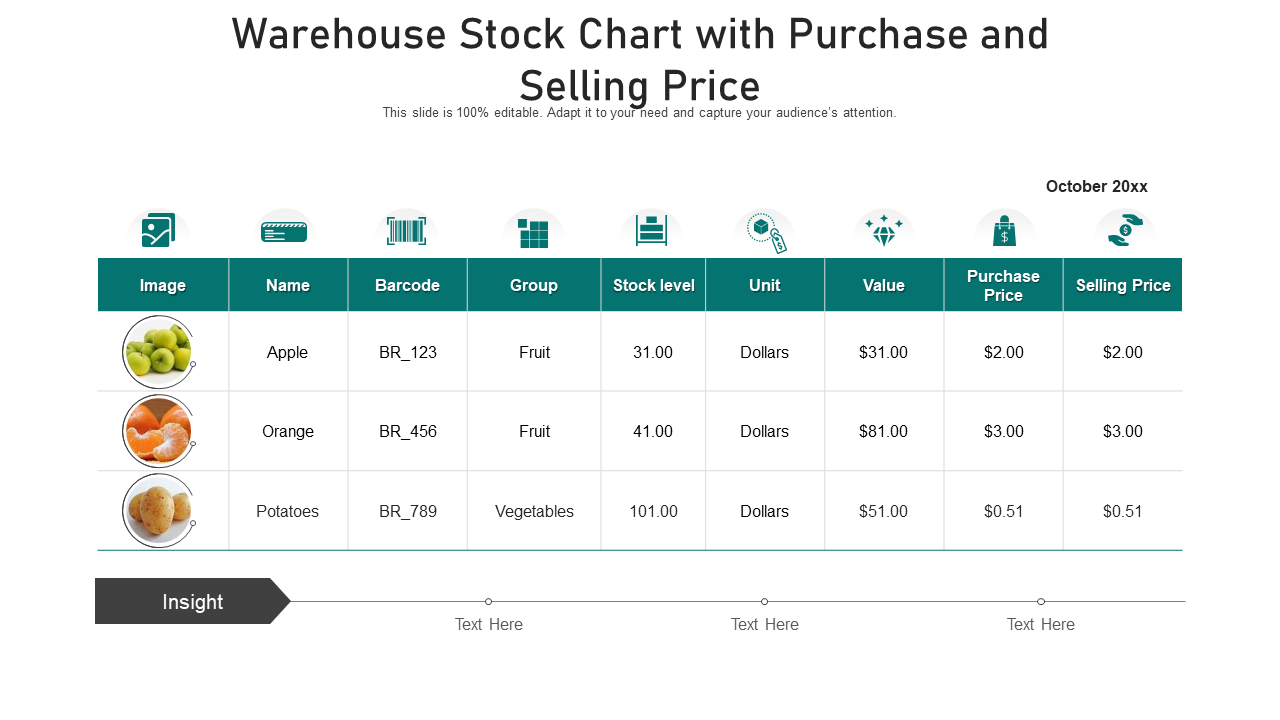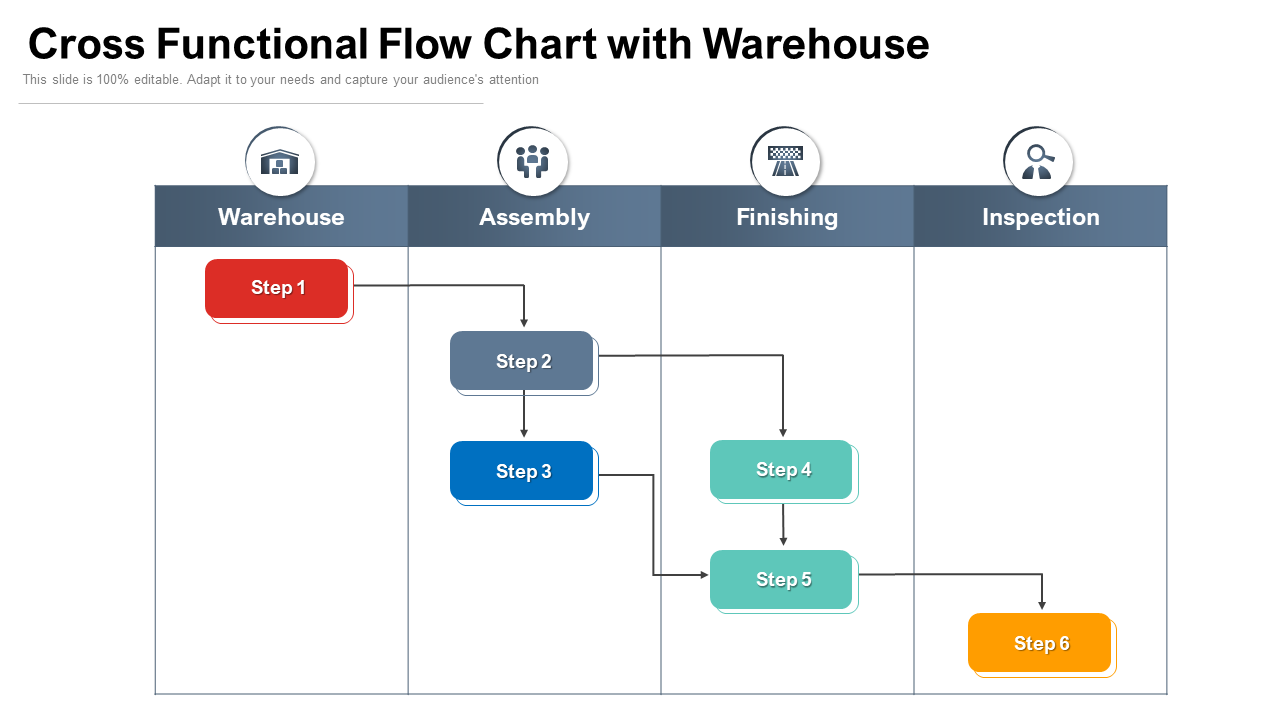"Without continual progress and growth, such words as improvement, success, and achievement have no meaning" - Benjamin Franklin.
This quote highlights the importance of growth and progress in any field, and this includes warehouse management. The global market size for warehouse management systems was USD 3.4billion in 2022 and is anticipated to grow at a CAGR (compound annual growth rate) of 19.0% from 2023 to 2030, with logistics companies continually striving to overcome challenges posed by fluctuating product markets and warehouse management to meet rising demands.
An effective warehouse chart can be the difference between efficient and inefficient warehouse performance. And here, the warehouse chart templates can be the game changer that enables warehouse managers, stock supervisors, and other professionals involved in the project to track inventory, analyze data, and make informed decisions to help them streamline the warehouse operations.
As a warehouse manager, you want the right charts to help you achieve your goals. SlideTeam's Warehouse Management Chart Templates aid in reducing lead time, improving product delivery speed, and lowering distribution expenses.
Revamp your tasks and warehouse management game with our collection of pre-designed PowerPoint Slides that are bound to elevate your efficiency. You can experience the luxury of customization with our structured content-ready slides, all available at your fingertips. Let's take a closer glance at each of these templates and explore the endless possibilities that they hold.
Here are the top 7 warehouse chart templates that can help you streamline your warehouse performance:
Check Out Our Top 7 Warehouse Chart Template
Template 1: Enterprise Data Warehouse Tools Comparison Chart
This chart helps you compare different data warehouse tools with unique pros and cons, pricing models, and capabilities, which makes selecting the right tool for your business easier. It's crucial to weigh your options carefully. In this comparison analysis, this template evaluates five of the top data warehouse tools: Autonomous Data Warehouse, Azure Synapse SQL, DB2 Warehouse, Teradata Vantage, and SAP Data Warehouse Cloud. From scalability to data security, it delves into every aspect that matters and provides a comprehensive analysis to aid in your decision-making process.
Template 2: Business Intelligence Flowchart Depicting Data Warehouse Profiling
This chart provides a clear flow of how data moves from different sources to the data warehouse, allowing you to optimize your warehouse's data profiling process. The visually appealing slide depicts a comprehensive flowchart for data warehouse profiling, specifically designed for business intelligence purposes. This template includes essential components such as transactional systems, a data manager, sales, promotion, finance, a data warehouse, a data store for operations, dashboards, notifications, and more. By leveraging this template, you can streamline your data quality management process, restructure your workflows, and benchmark your performance against industry standards. Captivate your audience and take your business to the next level with a download of this template today!
Template 3: Warehouse Inventory Carrying Cost Pie Chart
This chart shows a pie chart that breaks down the costs incurred in carrying inventory involved in warehouse inventory management, including inventory insurance, taxes, surveys, storage, shrink, payroll, and inspection. It gives you a comprehensive view and critical insights into your warehouse expenses. Download our pie chart template and intrigue your audience with visually appealing warehouse expense insights.
Template 4: Warehouse Stock Chart with Purchase and Selling Price
This chart displays your stock levels, purchase price, and selling price, allowing you to optimize your pricing strategy and ensure you have the right inventory levels at the right time. With a visually encapsulated image, the name of each item, its barcode, the group in which it falls, stock level, and unit of measure, this chart is the perfect tool to help you make informed decisions about your inventory levels. Download our comprehensive stock-level chart template now and optimize your pricing strategy.
Template 5: Warehouse Stock Chart with Product Category and The Unit Price
This chart helps you monitor your stock levels and pricing by product category. It demonstrates each product's ID, name, category, unit price, total units received, and total value, enabling you to make informed decisions about inventory levels and pricing strategy. Download the unique chart and monitor and optimize your inventory levels by product category, ensuring you have the correct amount of stock at the right time.
Template 6: Warehouse Strategy Planning and Implementation Flow Chart
Ready to revolutionize your warehouse strategy? This chart provides a clear flow of how to plan and implement a warehouse strategy, helping you identify key areas of improvement and make informed decisions. The PPT Slides cover crucial components like establishing sponsorships, determining strategic information needs, developing data warehouse architecture, and selecting and implementing data warehouse technologies. It also shows the interlinking of elements to the components in a different flow. Don't wait any longer! Download our template now and take the first step toward warehouse strategy.
Template 7: Cross-Functional Flow Chart with Warehouse
This chart effectively outlines the various departments involved in the warehouse operation, a four-stage process. With clear visuals of the warehouse operation and their interactions in the four-stage process of Warehouse Assembly, Finishing, and Inspection, this chart is the perfect tool to help you optimize your operations. Download our comprehensive departmental chart template now and gain valuable insights into your processes.
Streamline Your Warehouse Performance with these Effective Charts
Effective warehouse management is critical for businesses to optimize inventory management and increase efficiency in their supply chain operations. These warehouse charts are powerful tools that provide insights into warehouse performance, inventory levels, costs incurred, and much more. From data warehouse tools to inventory-carrying cost pie charts, the templates in this blog cover a range of aspects that businesses need to consider when managing their warehouse operations. So, why compromise for the ordinary when you can elevate your game like a pro? Download one of our Warehouse Charts templates and witness the magic of task management.
A professional note: If you're looking for top-quality inventory list templates with examples and samples, we recommend checking out this resource on SlideTeam's blog: It's a fantastic guide to help you make the most out of our Warehouse Charts templates and streamline your inventory management process.
FAQs on Warehouse Chart
What Is a Chart Warehouse?
A chart warehouse refers to a collection of pre-designed charts and graphs used to represent data related to warehouse operations visually. These charts can help warehouse managers analyze key metrics such as inventory carrying costs, costs incurred, and pricing information. Data warehouse tools are often used to collect and analyze this data in real time, providing managers with up-to-date information on the status of their warehouse operations.
What Is a Warehouse Process Flow?
A warehouse process flow is a diagram or chart outlining the various steps in moving products and materials through a warehouse. This process flow typically includes receiving, storage, picking, packing, and shipping stages. By mapping out the warehouse process flow, managers can identify potential bottlenecks or inefficiencies in the process and take steps to optimize their operations.
What Is Warehouse Planning?
Warehouse planning refers to developing a comprehensive strategy for managing the various aspects of a warehouse operation, including inventory management, warehouse insurance, and staff training. Effective warehouse planning involves careful analysis of key metrics such as inventory carrying costs and consideration of factors such as the layout of the warehouse, the availability of storage space, and the types of products being stored. By developing a solid warehouse plan, managers can ensure that their operations run efficiently and smoothly, reducing costs and maximizing profits.





 Customer Reviews
Customer Reviews
























